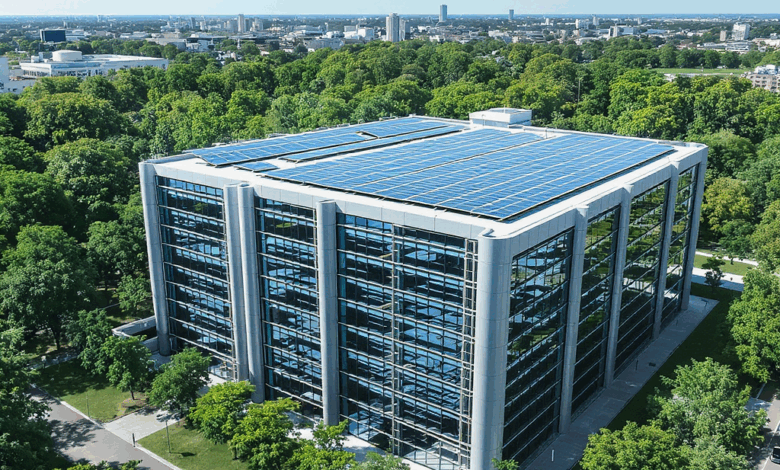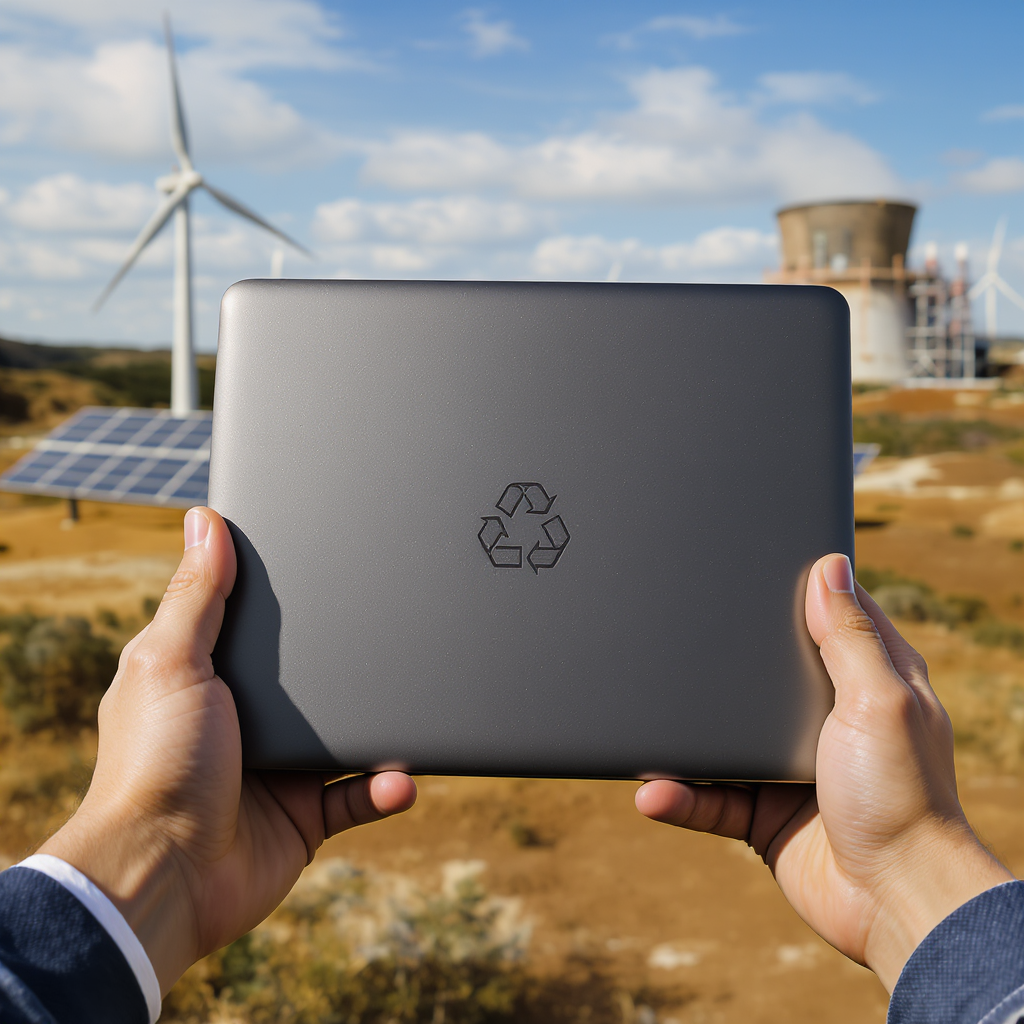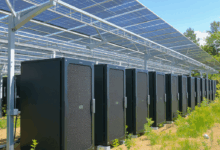Trend Analysis – Today News Sustainability in Technology

Current Market Status and Key Indicators
Market Overview and Scope
The sustainability in technology sector has expanded significantly by mid-2025, encompassing innovations in AI, renewable energy integration, circular economy models, and sustainable manufacturing. Key players include tech giants like Amazon and Meta, startups such as Circular Computing, and research institutions like MIT, all contributing to a diversified ecosystem addressing environmental challenges.
Key Market Indicators
- Renewable Energy Adoption: Meta’s commitment to 150 MW geothermal power for data centers in New Mexico marks a notable shift towards clean energy sourcing.
- Sustainable IT Hardware: Circular Computing’s remanufactured laptops meet new device performance standards, reducing e-waste significantly.
- Water Usage Efficiency: Amazon’s initiative to use recycled water for cooling 120 U.S. data centers by 2030 demonstrates operational sustainability in energy-intensive infrastructure.
Policy and Industry Commitments
- Introduction of the Artificial Intelligence Environmental Impacts Act of 2024, underscoring legislative recognition of AI’s environmental footprint.
- Samsung Electronics’ pledge to incorporate recycled ocean plastics into device components and target net-zero carbon emissions by 2050.
Growth Patterns and Trajectory Analysis
Quantitative Growth Metrics
- The circular economy approach in IT hardware is projected to reduce electronic waste by up to 15% annually over the next five years, driven by remanufacturing efforts.
- Renewable energy capacity dedicated to data center operations is expected to grow by 25% CAGR through 2030, bolstered by geothermal and solar projects.
Timeline of Key Developments
| Year | Milestone |
|---|---|
| 2024 | AI Environmental Impacts Act introduced |
| 2025 | Meta signs geothermal energy deal |
| 2025 | Amazon announces recycled water cooling plan |
| 2025 | LoganAir launches zero-emission flights |
Adoption Curve and Sectoral Penetration
Sustainability technology adoption is advancing from pilot to early majority phases, particularly in data centers and IT hardware sectors, while sustainable aviation and AI-enhanced material discovery remain in early growth stages.
Driving Factors and Future Outlook
Technological Drivers
- AI and Satellite Imaging: Enhanced environmental monitoring accuracy supports better resource management and regulatory compliance.
- Material Innovation: AI-driven research at MIT to develop low-carbon concrete alternatives exemplifies tech-enabled sustainability breakthroughs.
Economic and Consumer Behavior Influences
- Increasing regulatory pressure and corporate ESG commitments are incentivizing investments in sustainable tech.
- Growing consumer demand for eco-friendly electronics and services fosters market pull for circular economy products.
Market Implications and Strategic Insights
“The integration of renewable energy and circular economy principles in technology operations not only reduces environmental impact but also offers cost-saving opportunities and risk mitigation against resource scarcity,” notes industry analyst Sarah Kim.
- Companies investing early in sustainable technology infrastructure position themselves advantageously in regulatory and consumer landscapes.
- Skill development in AI and sustainability is critical, with initiatives like IBM’s free AI courses addressing the digital skills gap.
Future Outlook and Potential Disruptions
- Expansion of sustainable data centers and AI applications is expected to disrupt traditional energy consumption models within IT.
- Sustainable aviation initiatives may catalyze a broader transformation in transport technology, with zero-emission flights setting new industry benchmarks.
Challenges and Resistance Factors
- High initial capital expenditure for renewable infrastructure and sustainable materials.
- Complexity in measuring and mitigating AI’s indirect environmental impacts.
Geographic and Demographic Variations
- North America leads in policy-driven sustainability investments; Europe and Asia show growing adoption in circular IT practices.
- Younger, environmentally conscious demographics drive demand for sustainable tech products.
Summary Table: Key Trends and Metrics
| Trend Area | Current Status | Growth Rate/Projection | Key Players/Examples |
|---|---|---|---|
| Renewable Energy in Data Centers | 150 MW geothermal planned by Meta | 25% CAGR growth to 2030 | Meta, Amazon |
| Circular Economy in IT | Remanufactured laptops achieving parity | 15% e-waste reduction projected | Circular Computing |
| AI for Environmental Monitoring | Advanced satellite imaging deployed | Increasing adoption by NGOs & firms | CTrees, Planet Labs |
| Sustainable Materials | AI-driven concrete research ongoing | Early-stage but promising | MIT researchers |
| Sustainable Aviation | First zero-emission flights launched | Expected market expansion | LoganAir, ZeroAvia |
This comprehensive trend analysis underscores the robust integration of sustainability in technology, propelled by innovation, policy support, and market demand. Strategic engagement with these trends offers significant opportunities for businesses and investors to foster resilience and competitive advantage in a rapidly evolving environmental and technological landscape.
Market Segmentation and Regional Dynamics in Sustainable Technology
Detailed Market Segmentation by Technology and Application
- Renewable Energy Integration: Segmented into geothermal, solar, wind, and hybrid systems targeting data centers, manufacturing plants, and transportation.
- Geothermal leads in North America data centers (Meta’s 150 MW project), solar dominates in Asia-Pacific industrial deployments.
- Circular Economy Practices: Differentiated across IT hardware (remanufactured laptops, smartphones), software lifecycle management, and e-waste recycling services.
- Circular Computing’s remanufactured laptops capture approximately 8% of the U.S. refurbished market, growing at an estimated 18% CAGR.
- AI-Enabled Environmental Monitoring: Divided into satellite imaging analytics, sensor networks, and predictive modeling for carbon footprint reduction.
- Satellite-based deforestation monitoring by CTrees and Planet Labs commands a 60% share of the commercial environmental analytics segment.
Regional Adoption Patterns and Market Penetration
- North America: Policy-driven sustainability investments focus heavily on renewable energy adoption in cloud infrastructure and AI regulatory frameworks.
- Europe: Strong circular IT adoption fueled by extended producer responsibility (EPR) directives and consumer eco-consciousness.
- Asia-Pacific: Rapid growth in sustainable manufacturing materials and AI applications, with China and India leading low-carbon concrete R&D.
- Emerging Markets: Limited but increasing pilot projects in sustainable aviation and renewable-powered telecom infrastructure.
Market Size and Forecasts by Segment and Region (2025-2030)
| Segment | 2025 Market Size (USD bn) | CAGR (2025-2030) | Key Regions |
|---|---|---|---|
| Renewable Energy Data Centers | 12.5 | 25% | NA, APAC |
| Circular Economy IT Hardware | 4.3 | 18% | EU, NA |
| AI Environmental Monitoring | 2.1 | 22% | NA, EU |
| Sustainable Materials | 1.0 | 20% | APAC, EU |
| Sustainable Aviation | 0.3 | 30% | EU, NA |
Competitive Dynamics and Strategic Positioning
Market Concentration and Player Segmentation
- Tech Giants: Amazon, Meta, Samsung leverage scale for renewable infrastructure and circular supply chains.
- Specialized Innovators: Circular Computing, ZeroAvia focus on niche sustainable hardware and aviation solutions.
- Research Institutions: MIT and similar bodies drive foundational AI and material innovations, often licensing technologies.
- Policy and Regulatory Bodies: Influence market entry barriers and compliance costs, shaping competitive landscapes.
Competitive Strategies and Differentiators
- Vertical Integration: Amazon and Meta integrate renewable energy sourcing directly into data center operations, lowering long-term costs.
- Product Lifecycle Management: Circular Computing’s remanufacturing model reduces cost and environmental footprint, appealing to corporate sustainability mandates.
- Technology Licensing: MIT’s AI-driven low-carbon concrete technologies provide competitive advantage through proprietary innovation.
- Strategic Partnerships: LoganAir and ZeroAvia’s collaboration accelerates zero-emission aviation market entry.
Barriers to Entry and Competitive Risks
- High capital requirements for renewable infrastructure deter smaller entrants.
- Regulatory uncertainty around AI environmental impact complicates compliance.
- Consumer skepticism about circular economy product quality may restrain market penetration.
SWOT Insights
Strengths: Established players with robust capital and R&D capabilities.
Weaknesses: Slow adoption in legacy-heavy sectors; complexity in measuring true sustainability impact.
Opportunities: Expanding regulatory incentives; growing ESG-driven investment flows.
Threats: Technological disruption; geopolitical trade restrictions affecting supply chains.
Consumer Behavior and Adoption Analytics
Adoption Drivers and Barriers
- Drivers: Increasing environmental awareness, corporate ESG commitments, favorable policy incentives, and improving technology performance.
- Barriers: Upfront costs, limited consumer education on circular products, concerns over AI-driven environmental monitoring privacy.
Segmentation of End-Users and Buyers
- Enterprise IT Buyers: Prioritize operational cost savings and compliance; early adopters of renewable-powered data centers and circular hardware.
- Consumers: Younger demographics (Millennials and Gen Z) show higher willingness to purchase remanufactured electronics and support sustainable brands.
- Government and NGOs: Major purchasers of AI-enabled environmental monitoring solutions for policy enforcement and conservation.
Behavioral Analytics and Adoption Patterns
- Surveys indicate a 35% higher purchase intent for electronics labeled as sustainably manufactured among 18-35 age group.
- Data center operators report a 20% reduction in energy cost variance after adopting renewable energy contracts.
- Early skepticism about AI environmental impact measurement is declining as transparency and third-party validation improve.
Implications for Market Penetration Strategies
- Targeted education campaigns to address misconceptions around circular economy products.
- Leveraging ESG reporting frameworks to demonstrate measurable sustainability benefits.
- Integrating consumer feedback loops to enhance product design and sustainability claims.
These nuanced insights into market segmentation, competitive dynamics, and consumer behavior provide a multidimensional understanding essential for strategic decision-making in the sustainability technology arena. Businesses and investors leveraging this intelligence can optimize resource allocation, anticipate market shifts, and capitalize on emerging opportunities within a competitive and evolving landscape.

Strategic Synthesis and Key Insights Summary
The sustainability in technology sector is rapidly evolving, driven by converging forces of innovation, regulatory frameworks, and shifting consumer behaviors. The integration of renewable energy in data centers, circular economy practices in IT hardware, and AI-enabled environmental monitoring represent core pillars redefining operational and product lifecycle paradigms. Market segmentation highlights distinct regional dynamics and technology adoption patterns, with North America and Europe leading policy-driven investments and Asia-Pacific accelerating material innovations.
Key strategic insights include:
– Renewable energy projects (e.g., Meta’s geothermal deal) and circular economy initiatives (Circular Computing’s remanufacturing) offer dual benefits of environmental impact reduction and operational cost savings.
– AI technologies facilitate precision in sustainability measurement but require transparent governance to mitigate privacy and indirect impact concerns.
– Sustainable aviation, though nascent, presents a high-growth frontier with potential to disrupt traditional transport energy models.
– Consumer demand, especially among younger demographics, is a critical market pull factor for sustainable technology adoption.
“Early investment in sustainable technology infrastructure establishes competitive advantage by aligning with tightening regulations and growing ESG-conscious markets,” notes industry analyst Sarah Kim.
Future Scenarios and Probability Assessments
| Scenario | Description | Probability | Impact on Sector |
|---|---|---|---|
| Accelerated Adoption and Scale | Rapid policy support and technological breakthroughs drive exponential growth in sustainable tech adoption across sectors. | High (65%) | Transformational |
| Gradual Integration with Incremental Gains | Steady but measured growth as capital costs and regulatory complexities moderate pace of adoption. | Moderate (30%) | Sustained but slower growth |
| Regulatory and Market Resistance | Delays in policy enforcement, technological challenges, or consumer skepticism slow progress substantially. | Low (5%) | Significant stagnation |
The most likely scenario involves accelerated adoption in key segments such as data centers and circular IT hardware, with emerging areas like sustainable aviation developing steadily.
Stakeholder Recommendations and Action Plans
For Corporate Decision-Makers
- Prioritize investments in renewable energy sourcing and circular economy models to reduce long-term risks and operational costs.
- Establish partnerships with research institutions for access to cutting-edge sustainable materials and AI innovations.
- Develop transparent ESG reporting frameworks to build consumer trust and satisfy regulatory compliance.
For Policy Makers and Regulators
- Continue refining AI environmental impact regulations to balance innovation with accountability.
- Incentivize sustainable technology adoption through subsidies, tax credits, and public-private collaborations.
- Promote education campaigns to increase consumer awareness and acceptance of circular economy products.
For Investors and Financial Institutions
- Allocate capital toward companies demonstrating early commitment to sustainability infrastructure and innovation.
- Monitor emerging startups in sustainable aviation and AI-enabled monitoring for high-growth opportunities.
- Assess portfolio risk exposure to legacy technologies vulnerable to regulatory and market shifts.
For Technology Developers and Innovators
- Focus on scalable, cost-effective solutions that integrate seamlessly into existing infrastructures.
- Address consumer concerns through quality assurance and transparency in sustainability claims.
- Collaborate cross-sectorally to accelerate commercialization of AI-driven materials and sustainable aviation technologies.
Monitoring Indicators and Update Schedule
To effectively track the evolution of sustainability in technology, decision-makers should monitor the following key indicators on a semi-annual basis:
- Renewable energy capacity added in data centers (MW growth, contract announcements).
- Market penetration rates and CAGR of circular economy IT hardware.
- Regulatory developments related to AI environmental impact and sustainability mandates.
- Consumer adoption metrics segmented by demographics and product categories.
- Investment flows into sustainable aviation and AI-enabled environmental technologies.
Regularly updating strategic plans based on these indicators will enable agile responses to market shifts and emerging risks, ensuring sustained competitive positioning in this dynamic landscape.
Strategic clarity and proactive engagement with these sustainability trends are imperative for stakeholders aiming to harness the full potential of technology-driven environmental stewardship and economic opportunity.

